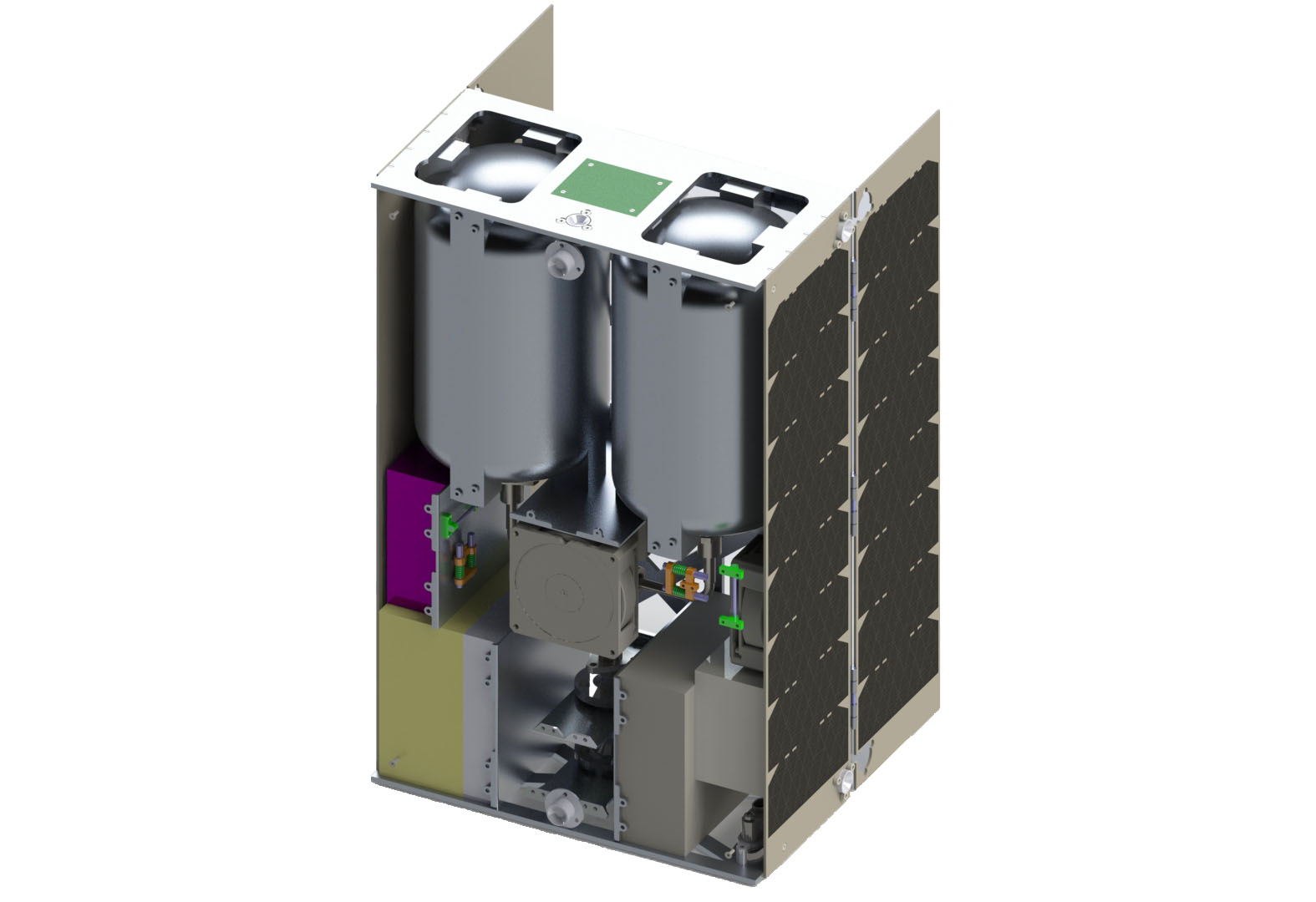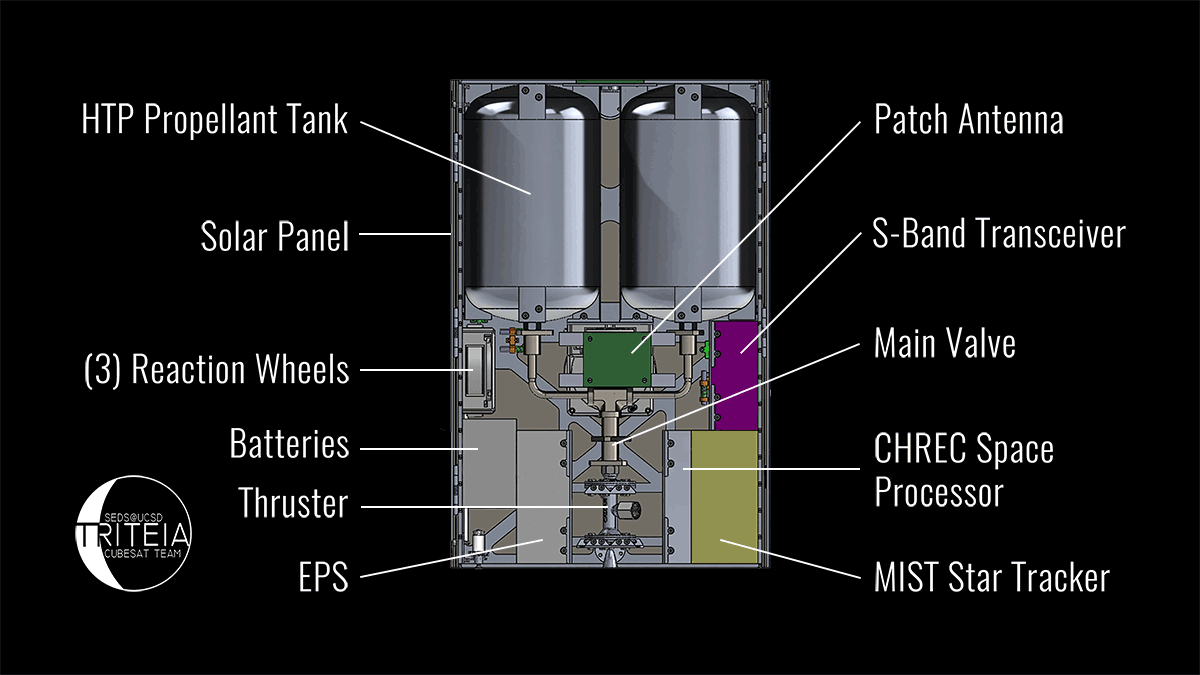Triteia is the Cube Quest Challenge entry from the University of California, San Diego’s Students for the Exploration and Development of Space (SEDS). As part of their approach, they are making use of an additively manufactured thruster for their spacecraft.
This 3D-printed engine thruster is vital for the semi-autonomous, chemically propelled 6U CubeSat to make its journey to the moon, then maneuvering to enter lunar orbit.

Additive manufacturing
Triteia represents a new agile approach to space mission design, said Darren Charrier, project leader for Triteia. “We’re doing very well and definitely on track. The spacecraft is in the development phase with a recent engine test completed and software development well underway,” he said.
The additively manufactured thruster used for Triteia is tagged Callan. “In a recent test of our engine at Purdue, we got great data,” Charrier said.
Their CubeSat engine encompasses a hydrogen peroxide blowdown system. According to the Triteia team, by utilizing a monopropellant and a blowdown feed system, volume, mass, and complexity were able to be minimized. Direct Metal Laser Sintering (DMLS) of highly durable Inconel 718 is the process utilized to produce Callan.
The thruster includes an additively manufactured diffuser section, reaction chamber, and nozzle. Its catalyst pack was manufactured through traditional processes.

Systems-based engineering
“We have definitely come a long way, doing this without professors but relying on a lot of advisors,” Charrier emphasizes. “Our team is using systems-based engineering approaches to tackle this project, be it for time line management, understanding requirements, that sort of thing.”
Charrier calls attention to a number of Triteia sponsors, such as Space Micro of San Diego for aiding in CubeSat components, like use of the company’s high-performance CHREC space processor. It comprises radiation hardened components and features high performance computing abilities with a fault tolerant architecture. By integrating that processor into Triteia, the team’s spacecraft can pave the way for the incorporation of modern high-level software development for future space missions, he feels.

Thruster testing
Another spacecraft sponsor is Metal Technology, a firm that specializes in additive manufacturing located in Albany, Oregon – a big help in fabricating Triteia’s engine.
According to the team website, the testing conducted at Purdue collected high speed videos, infrared thermal images, and pressure and temperature data to demonstrate the flight readiness of additively manufactured thrusters with an emphasis on safety and reliability.
The CubeSat’s power will be provided by a set of solar panels designed and manufactured by SEDS at UCSD.

Raising the readiness level
“This is a big project with quite a number of complicated subcomponents. Each one of them has large milestones,” Charrier points out.
Taking on Triteia is rich with complex requirements, safety analysis, exacting specifications, testing procedures, and maintaining documentation. Being able to integrate all the pieces of the CubeSat is a one-of-a-kind experience, Charrier notes.
“It’s an exciting opportunity for everyone on the team. The project has opened a lot of doors. CubeSats, in my eyes, is a good test bed and to try different things all at once,” Carrier senses. “I would very much like to see CubeSats used as test beds for various technologies so we can raise their readiness level. We can make space travel more efficient, cheaper and more sustainable for the future,” he said.
The Cube Quest competition offers a total of $5 million to teams that meet the challenge objectives of designing, building and delivering flight-qualified, small satellites capable of advanced operations near and beyond the moon. The competition is sponsored by NASA’s Space Technology Mission Directorate and managed by the Centennial Challenges Program at NASA’s Marshall Space Flight Center in Huntsville, Alabama,
For more information about the Cube Quest Challenge, visit:
https://www.nasa.gov/cubequest
For more information about Centennial Challenges, visit:
https://www.nasa.gov/directorates/spacetech/centennial_challenges/index.html

























